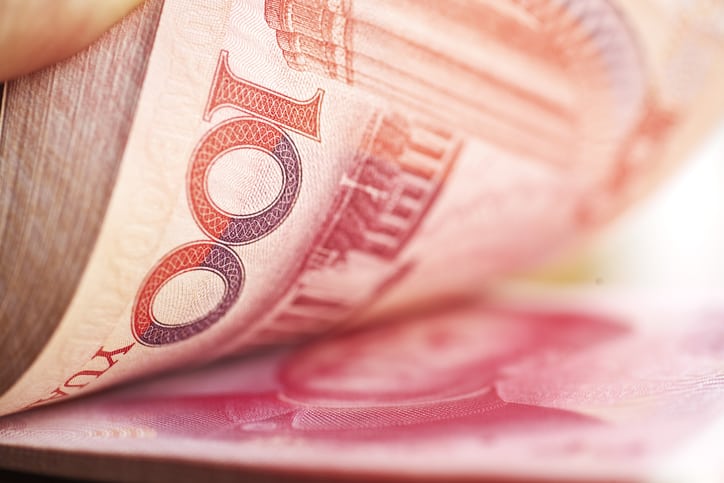China’s central bank—the People’s Bank of China—set the Chinese yuan’s official reference point at a stronger point than the fixing that sent the currency past 7.0 on Monday for the first time in more than a decade.
In Monday’s Asian afternoon trading hours, the onshore yuan traded at 7.0304 against the US and the offshore yuan 7.0807.
On Tuesday morning, the Chinese central bank set the yuan fixing at 6.9683, stronger than the expected 6.9736, according to a Reuters estimate.
Though the move is seen as an effort to slow the depreciation after the US labeled China as a currency manipulator, the new fixing, according to Reuters, was still weaker than the 6.9225 parity level from Monday morning and the weakest since late May in 2008.
Tuesday’ fix at USDCNY 6.9683 was close to the estimates published each day by some of those attempting to mirror how the PBoC sets its mid-point relative to its trading partners, but it’s still a big move and almost double the increase seen a day earlier, said Robert Carnell, ING’s chief economist head of research for Asia Pacific.
Given the 2% permitted trading band for the yuan, that means the spot rate for the currency against the dollar could rise to 7.1, he added.
The yuan’s sharp drop on Monday came after Trump threatened to impose 10% tariff on US$300 billion of Chinese goods from September for 1, a result of no purchase of American farm goods by China.
The diving yuan was widely seen as a retaliatory move by China, which it has refrained from deploying.
Last year, many banks estimated that the yuan would slide below 7 last year but it ended up higher than that by year-end and even hit its highest of 6.6872 in late February 2019.
The US Treasury’s designation of China as a currency manipulator represents an escalation of the trade tensions between the two countries, and will likely contribute to a hardening of positions, said Martin Petch, Vice President, Sovereign Risk Group, Moody’s Investors Service.
It also increases the likelihood that US tariffs on Chinese products will rise beyond current levels, followed by further retaliatory measures by China, he added.
Possible spillover impact
“Unless negotiations between the US and China resume rapidly, this latest development is likely to create negative spillover effects in both China, the US and globally, and particularly in Asia,”Petch warned.
At this stage, we don’t expect the US Treasury designation to have a material impact on China’s foreign exchange policy, he noted.
“However, market expectations of potential further yuan devaluation may lead to devaluation in other currencies, particularly those with strong trading ties to China,” Petch estimated.




